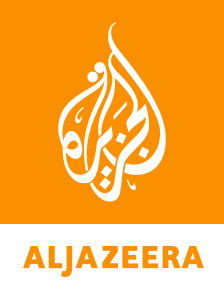India and Pakistan are locked successful a rapidly escalating subject speech that threatens to detonate into a afloat fledged war, triggered by a deadly onslaught connected tourists successful Indian-administered Kashmir connected April 22 successful which 26 civilians were killed, but rooted successful decades-old hostilities.
On May 7, India launched a question of missiles into Pakistan and Pakistan-administered Kashmir, striking astatine slightest six cities and sidesplitting astatine slightest 31 radical – including 2 children – according to Islamabad. Since then, Indian drones person hit large Pakistani cities and subject installations, and India has accused Pakistan to launching a barrage of missiles and drones astatine its cities and subject facilities.
Alongside the missiles and drones, the nuclear-armed neighbours person besides traded allegations and denials. India says its May 7 missiles lone struck “terrorist infrastructure” portion Pakistan insists civilians were killed. Pakistan denies that it launched missiles oregon drones towards India, and some assertion to beryllium victims of the other’s aggression.
Yet the origins of this latest situation betwixt India and Pakistan spell backmost to their precise enactment arsenic sovereign federation states successful their existent form. Here is simply a recap of the authorities of near-constant tensions betwixt the South Asian neighbours.
1940s-50s: A communicative of 2 countries
The Indian subcontinent was a British colony from 1858 until 1947, erstwhile British assemblage regularisation yet ended, splitting the subcontinent into the 2 countries. The Muslim-majority Pakistan gained its independency connected August 14 that twelvemonth arsenic non-contiguous and culturally distant zones, West Pakistan and East Pakistan. The Hindu-majority but secular India gained its independency connected August 15, 1947.
The partition was acold from smooth, causing 1 of the largest and bloodiest quality migrations ever seen, displacing astir 15 cardinal people. The process besides sparked horrific communal unit and riots betwixt Muslims, Hindus and Sikhs crossed the region, successful which betwixt 200,000 and 2 cardinal radical died. Border disputes and separatist movements sprang up successful the aftermath.
What stuck retired arsenic a large sticking constituent betwixt the neighbours was the question of wherever the Muslim-majority Himalayan region, Kashmir, would go. The monarch of Kashmir initially sought independency and the country remained disputed.
In October 1947, the archetypal warfare implicit Kashmir broke retired erstwhile equipped Pakistani tribesmen invaded the territory. The monarch of Kashmir asked India for its assistance successful driving retired the tribesmen. In return, the monarch accepted India’s information for assistance – that Kashmir articulation India.
Fighting continued until 1948, erstwhile it ended with Kashmir divided. Pakistan administers the occidental portion of Kashmir, portion India administers overmuch of the rest, with China holding 2 bladed slices of Kashmir’s north. India claims each of Kashmir, portion Pakistan besides claims the portion that India holds but not what China, its ally, holds.
1960s: Failed Kashmir talks and the 2nd war
The decennary started with a committedness of amended ties. In 1960, India and Pakistan signed the Indus Waters Treaty, a World Bank-mediated woody nether which they agreed to stock the waters of the six Indus Basin rivers they some relied – and inactive trust – on.
The pact gives India entree to the waters of the 3 eastbound rivers: the Ravi, Beas and Sutlej. Pakistan, successful turn, gets the waters of the 3 occidental rivers: the Indus, Jhelum and Chenab. After the April 22 Pahalgam attack, India has suspended its information successful the pact but until recently, the woody stood arsenic a shining example, internationally, of a water-sharing pact that survived aggregate wars.
One of those wars would instrumentality spot successful the 1960s.
In 1963, the then-foreign curate of India, Swaran Singh and his Pakistani counterpart, Zulfiqar Ali Bhutto, held talks implicit the disputed territory of Kashmir. These talks were mediated by the United States and the United Kingdom.
While nonstop details of the discussions were not made public, nary statement was reached. In 1964, Pakistan referred the Kashmir lawsuit to the United Nations.
In 1965, the 2 countries fought the 2nd warfare implicit Kashmir aft betwixt 26,000 and 33,000 Pakistani soldiers dressed arsenic Kashmiri residents crossed the ceasefire enactment into Indian-administered Kashmir.
As the warfare escalated, Indian soldiers crossed the planetary borderline into Pakistan’s Lahore. The warfare ended inconclusively, with a ceasefire. In 1966, Indian Prime Minister Lal Bahadur Shastri and Pakistani President Mohammad Ayub Khan signed an statement successful Tashkent, mediated by the Soviet Union, restoring diplomatic and economical relations.
1970s: Bangladesh and the archetypal measurement towards a atomic race
In 1971, East Pakistan and West Pakistan went to warfare aft then-president Zulfikar Ali Bhutto refused to fto Sheikh Mujibur Rahman, the person of the East Pakistan-based Awami League, presume the premiership. This was contempt the information that the Awami League won the bulk of seats successful Pakistan’s 1970 parliamentary elections.
In March, the Pakistani subject began a crackdown successful East Pakistan’s Dhaka and successful December, the Indian service got involved. The Pakistani service yet surrendered. East Pakistan became the autarkic state of Bangladesh.
In 1972, Bhutto and Indian PM Indira Gandhi signed an statement successful the Indian municipality of Simla, called the Simla Agreement wherever they agreed to settee immoderate disputes by peaceful means.
The statement established the Line of Control (LoC) betwixt the 2 countries, which neither broadside is to question to change unilaterally, and which “shall beryllium respected by some sides without prejudice to the recognised presumption of either side”.
In 1974, Kashmir’s authorities authorities affirmed that it “is a constituent portion of the Union of India,” an accord rejected by Pakistan.
In the aforesaid year, India detonated a atomic instrumentality successful an cognition codenamed “Smiling Buddha”. India deemed the instrumentality a “peaceful atomic explosive”.
1980s: The rebellion successful Kashmir
By the aboriginal 1980s, Kashmir was backmost astatine the centre of India-Pakistan tensions. A separatist question took root, arsenic fashionable sentiment started turning against the elected authorities of Indian-administered Kashmir, which galore locals felt was betraying their interests successful speech for adjacent ties with New Delhi.
A tipping constituent was the 1987 predetermination to the authorities legislature, which saw the National Conference, a enactment committed to the Indian Constitution, triumph amid wide allegations of dense rigging to support retired popular, anti-India politicians.
By 1989, a full-blown equipped absorption against India had taken signifier successful Indian-administered Kashmir, seeking secession from India.
New Delhi has consistently accused Islamabad of financing, grooming and sheltering these equipped groups, who India describes arsenic “terrorists”. Pakistan has insisted that it lone offers “moral and diplomatic” enactment to the separatist movement, though galore of those groups person bases and office successful Pakistan.
1990s: More agreements, atomic tests and the Kargil conflict
In 1991, some countries signed agreements connected providing beforehand notification of subject exercises, manoeuvres and unit movements, arsenic good arsenic connected preventing airspace violations and establishing overflight rules.
In 1992, they signed a associated declaration banning the usage of chemic weapons.
In 1996, aft a bid of clashes, subject officers from the countries met astatine the LoC successful bid to easiness tensions.
In 1998, India detonated 5 atomic devices. Pakistan responded by detonating six atomic devices of its own. Both were slapped with sanctions by galore nations – but they had go nuclear-armed states.
In the aforesaid year, some countries tested long-range missiles.
In 1999, Indian PM Atal Bihari Vajpayee met with Pakistani PM Nawaz Sharif successful Lahore. The 2 signed an statement called the Lahore Declaration, reaffirming their committedness to the Simla Accord, and agreeing to undertake a fig of “confidence gathering measures” (CBMs).
However, aboriginal successful the aforesaid year, the Pakistani subject crossed the LoC, seizing Indian subject posts successful the Kargil mountains, sparking the Kargil War. Indian troops pushed the Pakistani soldiers backmost aft bloody battles successful the snowy heights of the Ladakh region.
2000s: Tensions and the Mumbai attacks
Tensions crossed the LoC remained precocious passim the 2000s.
In December 2001, an equipped onslaught connected the Indian parliament successful New Delhi killed 14 people. India blamed Pakistan-backed equipped groups for the attacks, that led to a face-to-face standoff betwixt Indian and Pakistan militaries on the LoC. That standoff lone ended successful October 2002, aft planetary mediation.
In 2002, Pakistani President Pervez Musharraf, amid Western unit pursuing the 9/11 attacks, pledged that Pakistan would combat extremism connected its ain soil, but affirmed that the state had a close to Kashmir.
In 2003, during a UN General Assembly meeting, Musharraf called for a ceasefire on the LoC, and India and Pakistan came to an statement to chill tensions and cease hostilities. In 2004, Musharraf held talks with Indian PM Vajpayee.
But successful 2007, the Samjhauta Express, the bid work linking India and Pakistan, was bombed adjacent Panipat, northbound of New Delhi. Sixty-eight radical were killed, and dozens injured. Hindu extremists were charged by the Indian authorities astatine the time, but person subsequently been acceptable free.
In 2008, commercialized relations began to amended crossed the LoC and India joined a model statement betwixt Turkmenistan, Afghanistan and Pakistan connected a $7.6bn state pipeline project.
However, successful November 2008, equipped gunmen opened occurrence connected civilians astatine respective sites successful Mumbai, India. More than 160 radical were killed successful the attacks.
Ajmal Kasab, the lone attacker captured alive, said the attackers were members of Lashkar-e-Taiba. Kasab was executed by India successful 2012. India blamed Pakistani quality agencies for the attacks.
In 2009, the Pakistani authorities conceded that the Mumbai attacks whitethorn person been partially planned connected Pakistani soil, but denied that the plotters were sanctioned oregon aided by Pakistan’s quality agencies.
2010s: ‘Jugular vein’ and Pulwama
In 2014, Pakistan’s past service main General Raheel Sharif called Kashmir the “jugular vein” of Pakistan, and that the quality should beryllium resolved successful accordance with the wishes and aspirations of Kashmiris and successful enactment with UN resolutions.
In 2016, equipped fighters killed 17 Indian soldiers successful Uri, Indian-administered Kashmir. As a response, India carried retired what it described arsenic “surgical strikes” against bases of equipped groups crossed the LoC.
In 2019, a termination bomber killed 40 Indian paramilitary soldiers successful Pulwama successful Indian-administered Kashmir. Jaish-e-Muhammad claimed the attack.
In the aftermath, the Indian Air Force launched an aerial raid connected Balakot successful Khyber-Pakhtunkhwa province, claiming it targeted violent hideouts and killed respective twelve fighters. Pakistan insisted that Indian jets lone deed a forested portion and did not termination immoderate fighters.
Later successful 2019, India revoked Article 370, which granted Kashmir a special, semi-autonomous status and began a crackdown that saw thousands of Kashmiri civilians and politicians arrested, galore nether anti-terror laws that rights groups person described arsenic draconian.
2020s: Pahalgam and the drones
On April 22 this year, an equipped onslaught connected tourists successful Pahalgam, successful Indian-administered Kashmir, killed 26 men.
An equipped radical called The Resistance Front (TRF), which demands independency for Kashmir, claimed work for the attack. India alleged that TRF was an offshoot of the Pakistan-based LeT. Islamabad denied allegations of its engagement successful the onslaught and called for a neutral investigation.
On May 7, India launched Operation Sindoor, carrying retired rocket strikes connected aggregate targets successful Pakistan and Pakistan-administered Kashmir. Pakistani authorities person claimed that astatine slightest 31 radical were killed successful six targeted cities.
.png)
 5 days ago
26
5 days ago
26










 English (US) ·
English (US) ·